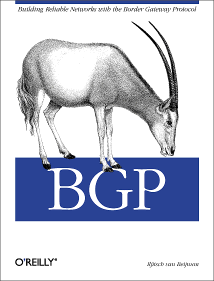
|

|

|
|
Home ·
BGP Expert Test ·
What is BGP? ·
BGP Vendors ·
Links ·
Archives ·
Books ·
My New BGP Book | ||
 (advertisement)
(advertisement)
| ||
|
DNS and routing of IPv6 micro allocations (posted 2003-12-09)
Currently, there are very few people who want to run an IPv6-only network. And that's a good thing too, as presently, there is no way to do this. One of the big hurdles is the DNS. Right now, very few, if any, top level domains accept IPv6 glue records. However, there are no technical reasons why those can't be added. Unfortunately, there is a technical reason why making the existing root nameservers perform their function over IPv6 is problematic. When a nameserver starts up, it looks at a local file for root servers. However, it will only use this list of root servers for a single query: one that results in the list of current root servers. In order to avoid problems, it's important that the answer for this query contains all the addresses for the root servers as additional information. The problem is that the original DNS specifications allow a relatively short packet size (around 512 bytes). This allows for the current 13 root servers and their IPv4 addresses with little room to spare. But in the mean time some root server operators are experimenting with making the root service available over IPv6. (See http://www.root-servers.org/ for more information.) At the time of this writing, four root servers have IPv6 addresses:
However, only B and M are reachable (for me). A closer look at the addresses used provides the following information:
The plot thickens... Since everyone and their little sister can easily obtain a /48 worth of IPv6 address space (I have two of those for personal use), it's expected that the global IPv6 routing table will suffer a lot of pollution from /48s, much like what happens with /24s in the IPv4 routing table, only worse. So it's unavoidable to filter on prefix length and not accept /48s. (Additionally, it looks like the H /48 isn't announced at all: the route doesn't show up on the AMS-IX IPv6 looking glass, which does show the F /48 and other more specifics.) When this issue came up on the IETF mailinglist, Paul Vixie, operator of the F root server, indicated that he had simply followed ARIN guidelines and obtained a /48 "micro allocation" from ARIN. It turns out ARIN has set aside a some address space for internet exchanges and "critical infrastructure". This address space is given out as /48s, see List of IPv6 Micro-allocations. (RIPE has a somewhat similar page at Smallest RIPE NCC Allocation / Assignment Sizes but it doesn't mention micro allocations.) All of this seems perfectly reasonable, except for one thing: the existence of micro allocations is never mentioned in the RIR's IPv6 policy document. This document, which is available in slightly different layouts and versions from LACNIC, APNIC, RIPE, ARIN and, for good measure, from IANA, says:
"4.3. Minimum Allocation
RIRs will apply a minimum size for IPv6 allocations, to facilitate prefix-based filtering. The minimum allocation size for IPv6 address space is /32." And this is exactly what many ISPs that offer IPv6 service do: they filter on a prefix length of 32 bits as indicated above, or 35 bits, the old allocation size. Obviously someone dropped the ball big time here, and this needs to be fixed in one way or another. Watch this space for more information. In the mean time, be sure to selectively relax your filters if you do prefix based filtering in IPv6. Gert Döring maintains a set of IPv6 BGP filter recommendations.
|
